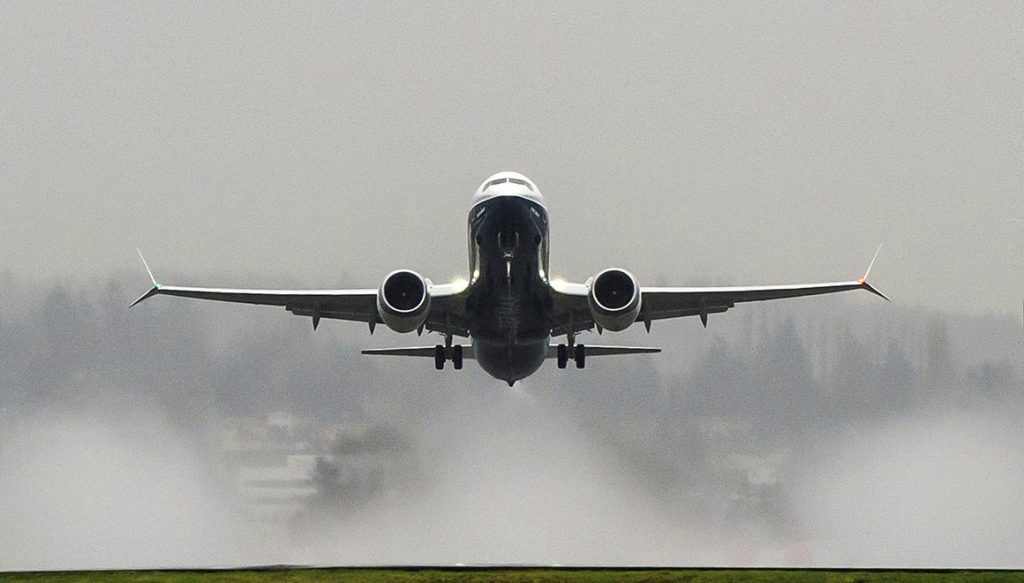
Boeing is ambitiously planning to ramp up its production output of the 737 MAX to 42 jets per month by Q3 2022, according to sources close to the matter.
The move is intended to mark the end of the planemaker’s battle on two fronts, following the COVID-19 pandemic and a years-long PR disaster following two fatal MAX crashes and manufacturing defects.
As it stands, Boeing is hoping to reach an output target of 31 MAX jets per month by March 2022, up from a currently unspecified, but admittedly “low” current rate, according to Boeing.
The planemaker is currently working to clear a backlog of hundreds of undelivered 737 MAX jets that were delayed by the near two-year grounding of the jet as safety changes were introduced, and again halted in April due to electrical faults.
According to a report by Reuters, sources close to the matter have confirmed that Boeing will achieve its early 2022 goal of 31 jets per month, and will make the ambitious move to increase this number by 11 per month within six months of achieving this goal.
These sources said current production rates sit in the single digits, due to the backlog, however the planemaker will move to increase to 26 per month by the end of this year.
The sources did note that implementation of an adjustment up from the current output forecast will still depend on a number of factors, such as demand levels, the capacity of suppliers, and Boeing clearing its current MAX backlog.
Another factor that could affect a successful ramp up in production is the MAX’s return to the Chinese market.
Prior to the second of two fatal crashes that saw the 737 MAX grounded for over 21 months, Chinese carriers were a major customer of the jet.
However, unlike most other civil aviation authorities around the globe, the Civil Aviation Administration of China (CAAC) is yet to lift its ban on the MAX.
Notably, before the 2019 grounding of the MAX, Boeing was producing 52 MAX a month at its Renton factory, and was well on its way to achieving a target of 57.
The rumours come just days after Boeing officially resumed deliveries of the MAX after the FAA finally approved a fix for the multiple electrical issues located in a quarter of the MAX fleet.
Boeing announced in April that it would once again halt deliveries on the 737 MAX, just five months after its near-two-year delivery hiatus during the jet’s recertification, in light of a number of electrical faults that had been located in certain jets.
The recipient of its latest MAX delivery has not yet been made public.
Earlier in the month, Boeing and the US Federal Aviation Administration finally settled on a fix for the ongoing electrical faults, which saw nearly a quarter of all MAX jets grounded around the globe.
The electrical issues involve a lapse in the grounding capabilities of some electrical circuits located in the cockpit. Grounding capabilities are vital in order to maintain a user’s safety in the event of a surge of voltage that could otherwise result in a shock or electrocution.
According to FAA administrator Steve Dickson, the agreed-upon repair is a “pretty straightforward fix”.
The issue was labelled by Boeing as being caused by a “production issue”, and was limited to jets delivered in the months after the FAA lifted its grounding ban on the MAX.
In its service bulletin, Boeing proposed adding a bonding strap or cable that workers screw onto two different surfaces, creating a grounding path for the affected electrical circuit, two of the sources said.
Sources also specified that the electrical grounding problems that have been located to date came as a result of Boeing changing a manufacturing method, as it worked to increase the speed at which it can produce the jet.
They said that the change made, which sparked the issues, pertained to a hole-drilling process.
Boeing initially told airlines that rectifying the issue could take as little as a few hours, or up to a few days, per jet.










